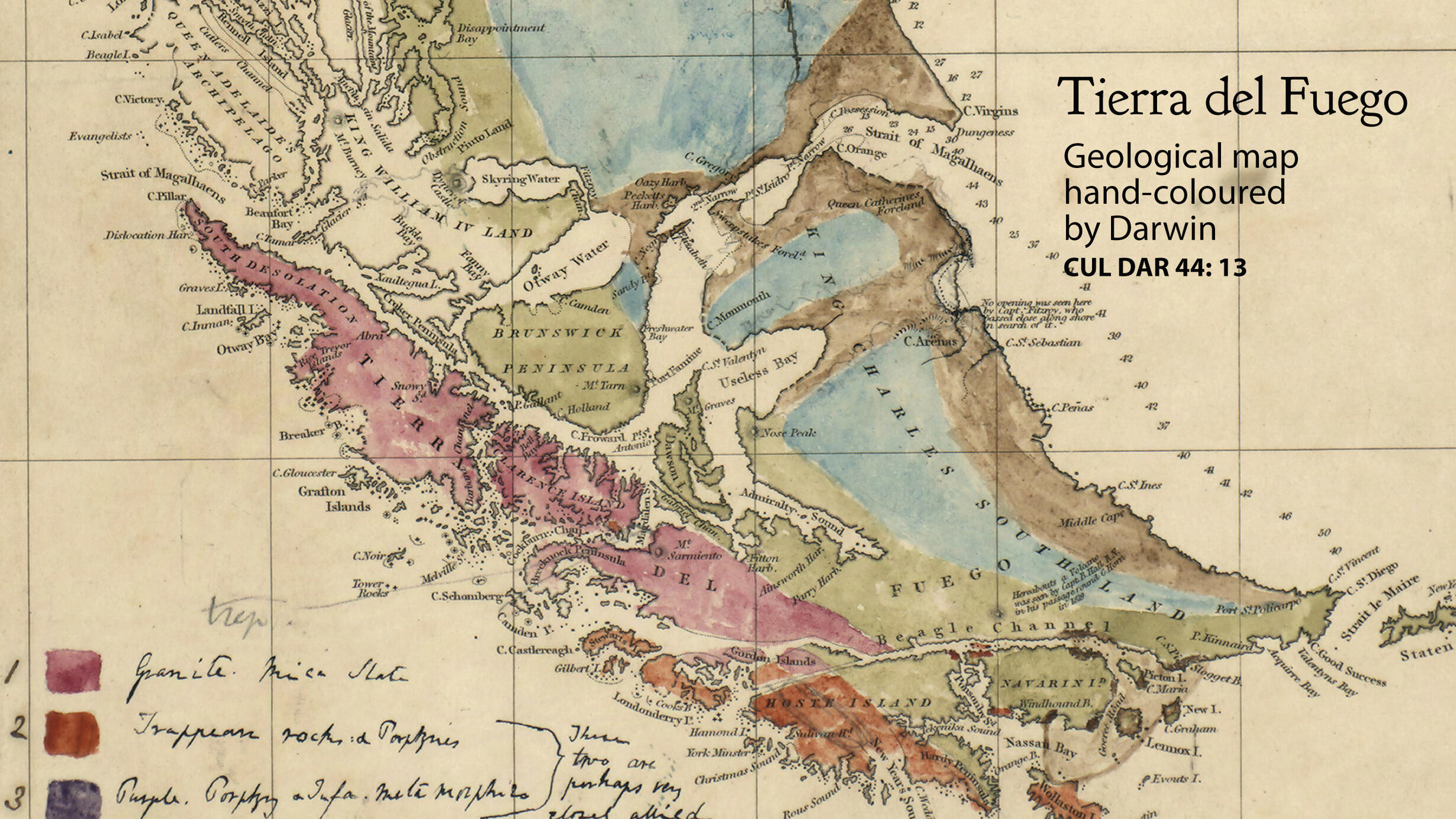Beagle Voyage

Beagle Voyage - From February 1835 to 1836. Including scientific manuscripts pertaining to transmutation
Subject Lists - More information about what Darwin read during this time period and voyage
From early on in the Beagle voyage, Darwin’s work on the geological history of South America was his central scientific activity. But his two areas of biological activity while the ship was in, or near, South American waters (1832-1835) were palaeontology—particularly the extinct giant mammals he collected extensively—and the geographical distribution of birds and small mammals that he collected as he traversed the continent from North to South, and as he moved from the mainland to the relatively nearby Falklands and Galapagos Islands. Darwin’s Beagle biology poses a fascinating and very difficult historical question. What part—if any at all—did these reflections play in the creation of the Origin?
Cambridge University Library
Courtesy of Cambridge University Library
Courtesy of Cambridge University Library
As a youth, Darwin was exposed to the evolutionary views of his grandfather Erasmus Darwin and his Edinburgh University mentor Robert Grant. Ironically, it was the anti-evolutionary perspectives of John Stevens Henslow’s species definition—which Darwin learned as a student in Cambridge—and Charles Lyell’s fierce but extensive critique of Lamarck that may have provoked Darwin’s first experiments with transmutation. These ‘experiments’ we find in Darwin’s February 1835 essay, which responds to elements of Charles Lyell’s Principles of Geology, 1st edn, volume 2 with its long anti-Lamarckian section and in Darwin’s evolving treatment of the distribution of mocking bird species on the islands of the Galapagos.